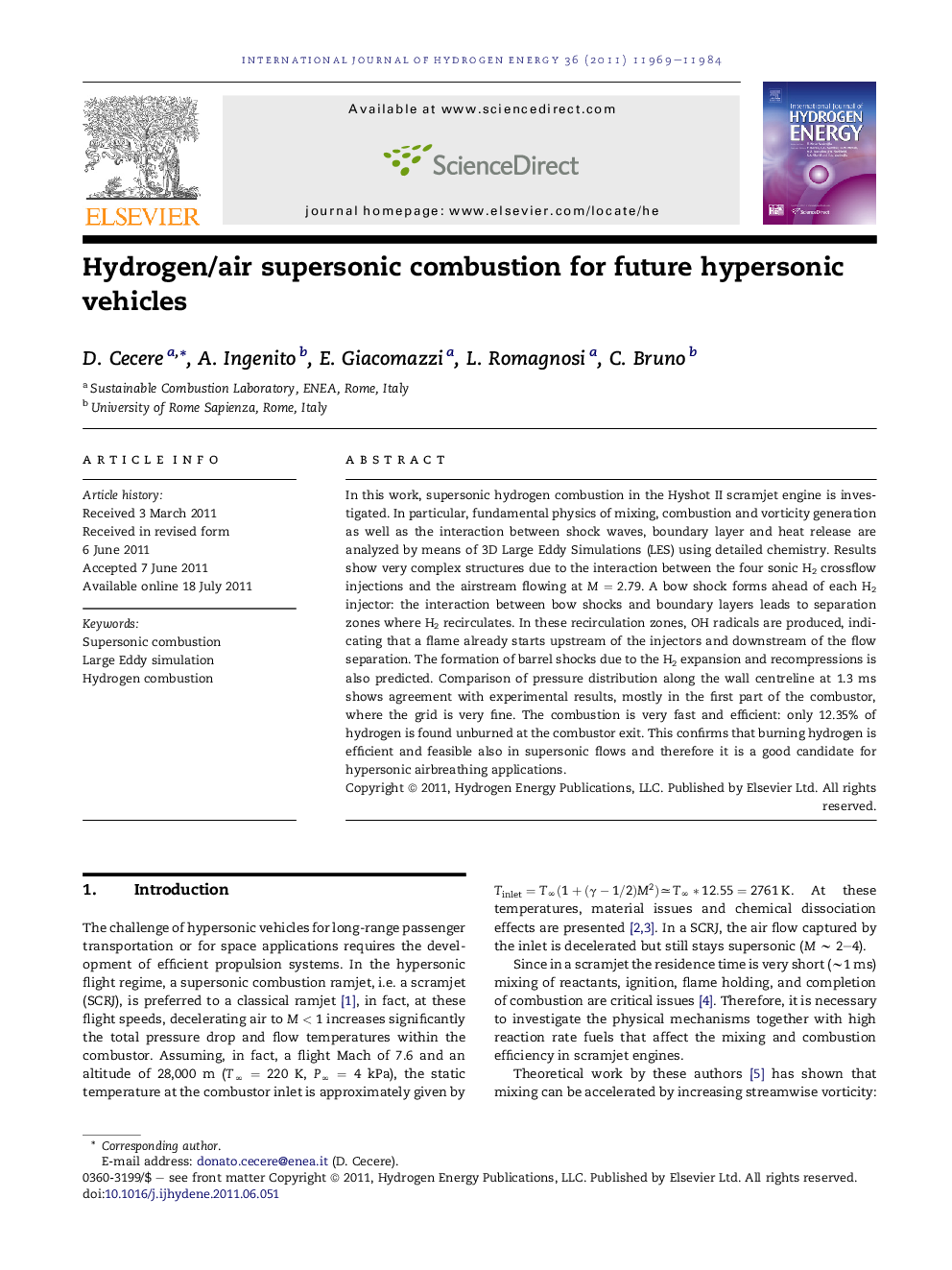| Article ID | Journal | Published Year | Pages | File Type |
|---|---|---|---|---|
| 1275889 | International Journal of Hydrogen Energy | 2011 | 16 Pages |
In this work, supersonic hydrogen combustion in the Hyshot II scramjet engine is investigated. In particular, fundamental physics of mixing, combustion and vorticity generation as well as the interaction between shock waves, boundary layer and heat release are analyzed by means of 3D Large Eddy Simulations (LES) using detailed chemistry. Results show very complex structures due to the interaction between the four sonic H2 crossflow injections and the airstream flowing at M = 2.79. A bow shock forms ahead of each H2 injector: the interaction between bow shocks and boundary layers leads to separation zones where H2 recirculates. In these recirculation zones, OH radicals are produced, indicating that a flame already starts upstream of the injectors and downstream of the flow separation. The formation of barrel shocks due to the H2 expansion and recompressions is also predicted. Comparison of pressure distribution along the wall centreline at 1.3 ms shows agreement with experimental results, mostly in the first part of the combustor, where the grid is very fine. The combustion is very fast and efficient: only 12.35% of hydrogen is found unburned at the combustor exit. This confirms that burning hydrogen is efficient and feasible also in supersonic flows and therefore it is a good candidate for hypersonic airbreathing applications.
► H2 supersonic combustion is studied by means of LES of the Hyshot II scramjet. ► The baroclinic term, enhanced by H2 low density, drives vorticity production. ► H2/air combustion is predicted very fast with a combustion efficiency of 87.65%.
